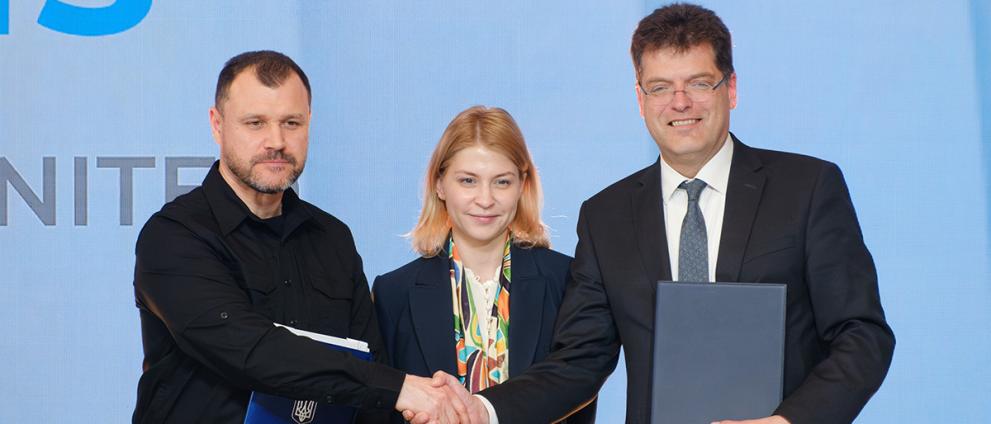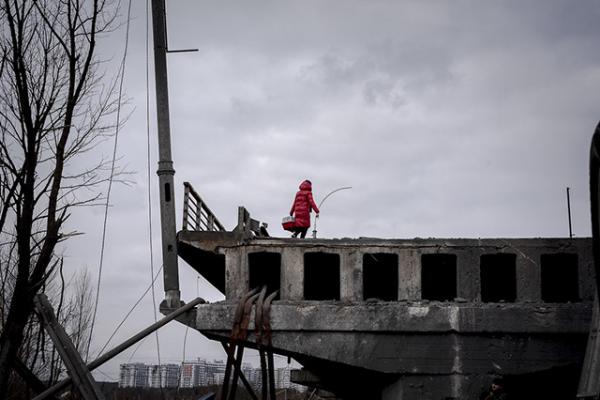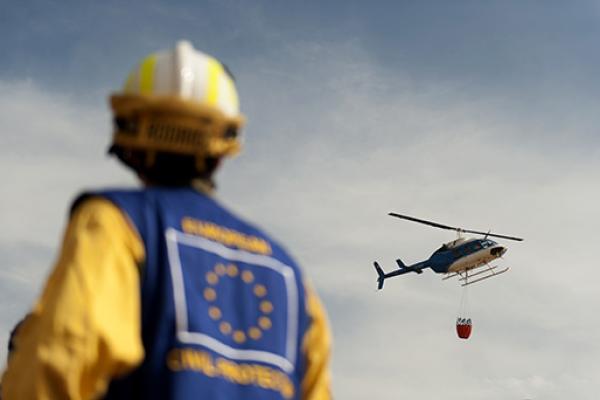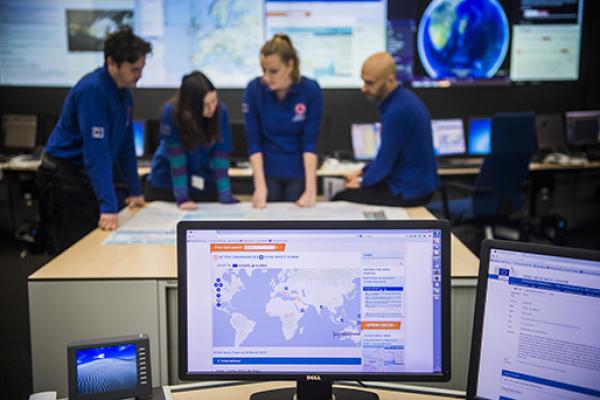
Today, Ukraine becomes a participating state of the EU Civil Protection Mechanism – the European solidarity framework that helps countries overwhelmed by a disaster.
Commissioner for Crisis Management, Janez Lenarčič, is today in Kyiv to officially sign an agreement on behalf of the European Union granting Ukraine a full membership of the Mechanism.
During his visit, he will participate at the International Summit of Cities and Regions in Kyiv with President of Ukraine Volodymyr Zelenskyy, Deputy Prime Minister Olha Stefanishyna, Minister of Internal Affairs Ihor Klymenko, and Head of Emergency Service Serhiy Kruk.
The EU Civil Protection Mechanism has been the central engine in channelling emergency in-kind assistance to Ukraine from all across Europe since the onset of Russia’s war of aggression against Ukraine in February 2022. In its largest and longest running operation, more than 88,000 tonnes of life-saving equipment, food, and medicines, have been sent to Ukraine via the Mechanism.
Most recently, more than 1,000 power generators fully financed by the EU were mobilised to Ukraine from the strategic rescEU energy reserves. Now, by being a full member, Ukraine will be able to dispatch aid via the Mechanism at a time another country finds itself in a crisis.
The EU is also allocating a further €55 million* in humanitarian funding to Ukraine on top of the €145 million already provided earlier this year.
As demonstrated by the past winter, freezing temperatures and Russia’s deliberate attacks on Ukraine’s energy infrastructure exposed Ukrainians to additional challenges. This new humanitarian funding will notably focus on preparing for next winter to ensure an extra layer of protection to those in need.
Janez Lenarčič, Commissioner for Crisis Management, said: “From the outset of Russia’s aggression against Ukraine, the EU Civil Protection Mechanism has been operating in full force to send life-saving aid to the country. As a full member of the Mechanism, Ukraine will now also be able to provide the same solidarity to other countries and people affected by crises. The Ukrainian civil protection authorities have already demonstrated their unwavering resilience as they fight against time to help restore what Russia has destroyed, while also to showing solidarity with Türkiye following the devastating earthquakes in February.”
“With this further step closer to EU integration, the EU continues to stand with Ukraine – by supporting its people in the middle of this war waged by Russia, whilst working together towards a stronger disaster management system in Europe. In the meantime, we continue to protect and save lives and are already preparing for next winter. We are topping up EU humanitarian aid to Ukraine with a further €55 million to make sure we are ready for the additional challenges brought on by the tough and cold winter months,” he explained.
Background
When an emergency overwhelms the response capabilities of a country in Europe and beyond, it can request assistance through the Mechanism.
The European Commission plays a key role in coordinating the disaster response worldwide. Since its inception in 2001, the EU Civil Protection Mechanism has been activated for more than 600 emergencies and crises inside and outside the EU.
The EU Civil Protection Mechanism aims to strengthen cooperation between the 27 EU countries and now 9 Participating States (Iceland, Norway, Serbia, North Macedonia, Montenegro, Türkiye, Bosnia and Herzegovina, Albania, and most recently Ukraine) on civil protection to improve prevention, preparedness, and response to disasters.
A joint approach further helps pool expertise and capacities of first responders, avoids duplication of relief efforts, and ensures that assistance meets the needs of those affected. Pooling together civil protection capacities and capabilities allows for a stronger and more coherent collective response.
The Mechanism also helps coordinate disaster preparedness and prevention activities of national authorities and contributes to the exchange of best practices. This facilitates the continuous development of higher common standards enabling teams to understand different approaches better and work interchangeably when a disaster strikes.
Since Russia’s invasion of Ukraine in February 2022, the EU has allocated in total of €685 million in humanitarian aid to Ukraine, including today’s €55 million top-up that has been requested by the European Commission and currently under adoption by the EU's Budgetary Authority.
EU-funded humanitarian assistance is provided in line with the humanitarian principles of humanity, neutrality, impartiality and independence. It is delivered through the UN humanitarian agencies, non-governmental organisations and the International Committee of the Red Cross.
* The allocation is part of the overall pledges of the European Commission and is still subject to the approval by the Budgetary Authority.
Details
- Publication date
- 20 April 2023
- Author
- Directorate-General for European Civil Protection and Humanitarian Aid Operations (ECHO)




